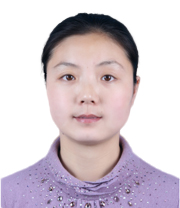

一、个人介绍:
丁晓雯,女,1981年11月生,江苏省扬州市人;华北电力大学环境科学与工程学院教授、博士生导师,教育部“能源与环境系统分析及工程应用创新引智基地”主任,北京能源发展研究基地研究员;入选“北京高等学校青年英才计划”、“华北电力大学创新人才支持计划”等;获2020年水力发电科学技术奖一等奖;主持国家科技重大专项、国家自然科学基金等项目40余项;发表论文90余篇,其中SCI、EI检索论文60余篇,出版中英文专著5部,获得国家发明专利2项。主要研究方向:电力行业水资源管理、非点源污染模拟与控制、流域综合管理、生态环境评价。
二、学习工作经历:
1998.09——2002.06 南京师范大学 教育学专业,学士;
2002.09——2007.06 北京师范大学 环境科学专业,博士;
2007.07——2012.12 华北电力大学 资源与环境研究院,讲师;
2013.10-2014.09 加拿大里贾纳大学 博士后,访问学者;
2013.01——2017.12 华北电力大学 资源与环境研究院,副教授,硕士生导师;
2018.01——今 华北电力大学 环境科学与工程学院,教授,博士生导师。
三、主要承担科研项目及成果:
1. 2021.1-2022.12,广东省流域水环境治理与水生态修复重点实验室开放研究项目“广东省典型小水电梯级开发河流生态流量评估及保障研究”,项目负责人。
2. 2021.1-2021.12,水利部水资源管理中心课题“典型水利工程取放水过程分析评估”,项目负责人。
3. 2020.1-2024.12,高等学校学科创新引智基地项目“能源与环境系统分析及工程应用”,项目负责人。
4. 2019.1-2019.12,中央水资源项目“小水电工程生态流量下泄保障措施研究”,项目负责人。
5. 2019.1-2019.12,中央水资源项目“节能评估现状及经验借鉴”,项目负责人。
6. 2019.1-2019.12,水利政策研究和制度建设预算项目“典型地区水利建设基金筹集使用做法与经验总结”,项目负责人。
7. 2018.1-2018.12,中央水资源项目“延续取水现状分析研究”,项目负责人。
8. 2018.1-2018.12,中央水资源项目“水资源项目年度成果汇编和分析”,项目负责人。
9. 2018.1-2018.12,江苏省水资源服务中心研究项目“江苏省国家重要饮用水水源地达标建设研究”,项目负责人。
10. 2017.5-2020.4,中央高校基本科研业务费优青培育项目“事故条件下饮用水源地供水保障若干核心问题研究”,项目负责人。
11. 2016.1-2017.12,水利部水利技术标准项目“电力行业建设项目水资源论证关键技术要点”,项目负责人。
12. 2016.1-2017.12,湖南省重金属污染场地环境监管技术体系研究及示范项目“典型重金属及农药复合污染场地风险评估及案例研究”,项目负责人。
四、主要论文及著作发表情况:
1. X. Y. Zhang, Q. D. Zhu, A. F. Zhai, X. W. Ding*. Development of interval transient pollution distribution model and its application in the Fenghuangshan drinking water source [J]. Ecological Modelling, 2022, 471: 110037. (SCI, 三区; IF, 3.512). (DOI: 10.1016/j.ecolmodel.2022.110037)
2. 徐志侠,陈涛,丁晓雯等. 核电与水资源安全 [M]. 北京:中国水利水电出版社,2022.
3. X. W. Ding, X. S. Dong, B. D. Hou, G. H. Fan, X. Y. Zhang. Visual platform for water quality prediction and pre-warning of drinking water source area in the Three Gorges Reservoir Area [J]. Journal of Cleaner Production, 2021, 309: 127398. (SCI, 一区; IF, 11.072)(10.1016/j.jclepro.2021.127398)
4. A.F. Zhai, B.D. Hou, X.W. Ding*, G.H. Huang. Hazardous chemical accident prediction for drinking water sources in Three Gorges Reservoir [J]. Journal of Cleaner Production, 2021, 296. (SCI,一区; IF, 11.072). (DOI: 10.1016/j.jclepro.2021.126529)
5. A. F. Zhai, X. W. Ding*, L. Liu, Q. Zhu, G.H. Huang. Total phosphorus accident pollution and emergency response study based on geographic information system in Three Gorges Reservoir area [J]. Frontiers of Environmental Science and Engineering, 2020, 14(3):1-13.
6. A. F. Zhai, X. W. Ding*, Y. Zhao, W. H. Xiao, B. X. Lu. Improvement of Instantaneous Point Source Model for Simulating Radionuclide Diffusion in Oceans under Nuclear Power Plant Accidents [J]. Journal of Environmental Informatics, 2020, 36(2): 133-145.
7. X.W. Ding, W. Tian, Q.W. Chen, et al. Policies on water resources assessment of coastal nuclear power plants in China [J]. Energy Policy, 2019, 128 (2019):170-178.
8. X. W. Ding, L. Liu, G. H. Huang, et al. . A Multi-Objective Optimization Model for a Non-Traditional Energy System in Beijing under Climate Change Conditions [J]. Energies, 2019, 12: 1692.
9. X. W. Ding, Q. Zhu, A. F. Zhai, et al. Water Quality Safety Prediction Model for Drinking Water Source Areas in Three Gorges Reservoir and its Application [J]. Ecological Indicators, 2019, 101:734-741.
10. X. W. Ding, X. Han, B. Kang, et al. Spatial-temporal Variation of Permanganate Index under Accident Conditions during Different Water Periods in Zigui Drinking Water Source Area, Three Gorges Reservoir Area, China [J]. Ecological Indicators, 2019, 101(2019):647-660.
11. X. W. Ding, D. X. Hua, G. H. Jiang, et al. Two-stage interval stochastic chance-constrained robust programming and its application in flood management. Journal of Cleaner Production, 2017,167:908-918.
12. X. W. Ding, S. Y. Wang, G. H. Jiang, et al. A simulation program on change trend of pollutant concentration under water pollution accidents and its application in Heshangshan drinking water source area. Journal of Cleaner Production, 2017, 167: 326-336.
13. X. W. Ding, Y. Xue, Y. Zhao, et al. Effects of different covering systems and carbon nitrogen ratios on nitrogen removal in surface flow constructed wetlands. Journal of Cleaner Production, 2017, 172: 541-551.
14. X. W. Ding, B. D. Hou, Y. Xue, G.H.Jiang. Long-term effects of ecological factors on nonpoint source pollution in the upper reach of the Yangtze River. Journal of Environmental Informatics, 2017,23(1):1–26.
15. Xiaowen Ding, Wei Wang, Guohe Huang, et al. Management of water resources assessment for nuclear power plants in China [J]. Water Quality Research Journal of Canada, 2016, 51 (3) 282-295.
16. Xiaowen Ding, Guihong Jiang, Baodenghou, et al. Wastewater Management Policies for Nuclear Power Plants and its Implementation in China [J]. Journal of Environmental Accounting and Management, 2016, 4(4) 423-440.
17. X. Y. Zhang, Q. D. Zhu, A. F. Zhai, X. W. Ding*. Development of interval transient pollution distribution model and its application in the Fenghuangshan drinking water source [J]. Ecological Modelling, 2022, 471: 110037. (SCI, 三区; IF, 3.512). (DOI: 10.1016/j.ecolmodel.2022.110037)
18. 徐志侠,陈涛,丁晓雯等. 核电与水资源安全 [M]. 北京:中国水利水电出版社,2022.
19. X. W. Ding, X. S. Dong, B. D. Hou, G. H. Fan, X. Y. Zhang. Visual platform for water quality prediction and pre-warning of drinking water source area in the Three Gorges Reservoir Area [J]. Journal of Cleaner Production, 2021, 309: 127398. (SCI, 一区; IF, 11.072)(10.1016/j.jclepro.2021.127398)
20. A.F. Zhai, B.D. Hou, X.W. Ding*, G.H. Huang. Hazardous chemical accident prediction for drinking water sources in Three Gorges Reservoir [J]. Journal of Cleaner Production, 2021, 296. (SCI,一区; IF, 11.072). (DOI: 10.1016/j.jclepro.2021.126529)